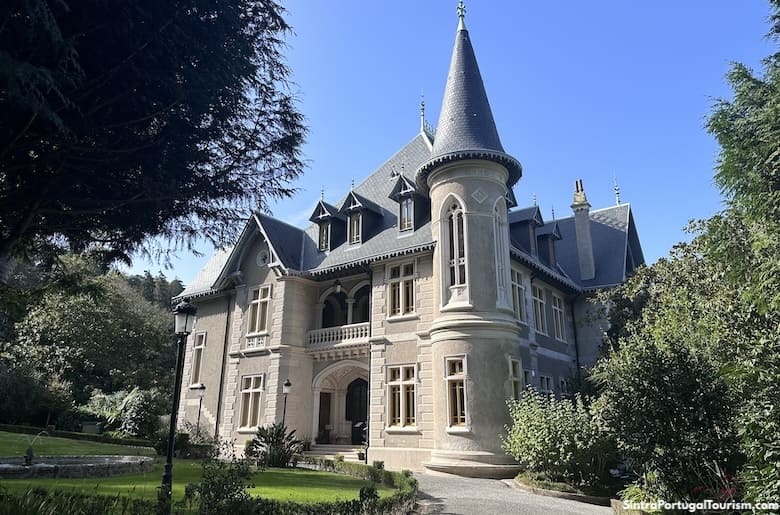
The main façade of Biester Palace
Built in 1880 to be the residence of Ernesto Biester (a wealthy 19th-century merchant and playwright), this is just one of many mansions and palaces hidden in Pena Park. Its conical roofs and neo-gothic windows face the road that goes up the mountain to Pena Palace, and it may look familiar if you saw "The Ninth Gate", a film by Roman Polanski starring Johnny Depp, which had Sintra as part of the setting.
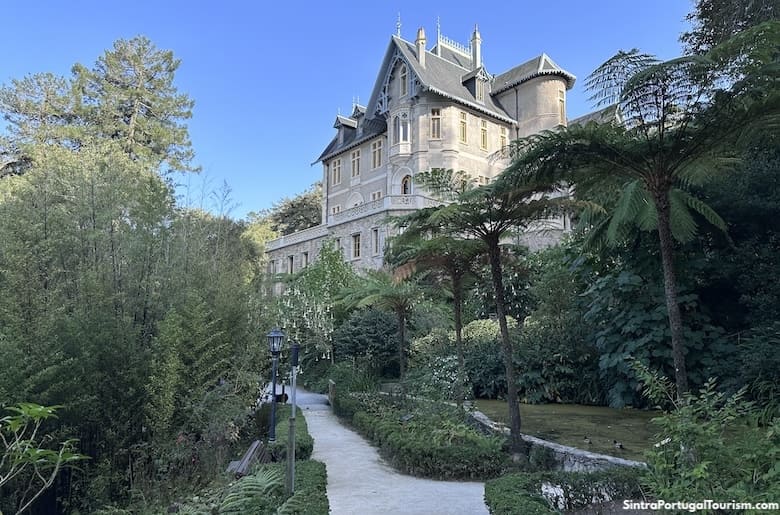
An exuberant park surrounds Biester Palace
Although it’s private property, it underwent a careful renovation to finally open to the public for the first time in 2022. Its architecture and decoration look exactly like when it was designed in the 19th century, including the frescoes, the stuccoes of the Music Room, paintings (including some naturalist pieces by Luigi Manini, an Italian architect and set designer who also left his mark in another palace in Sintra, the Quinta da Regaleira), and the ceilings painted by Paul Baudry (a French artist who painted the foyer of the Paris Opera). The theatrical décor also includes pieces by Bordalo Pinheiro, one of Portugal’s most eccentric artists and prominent ceramists.
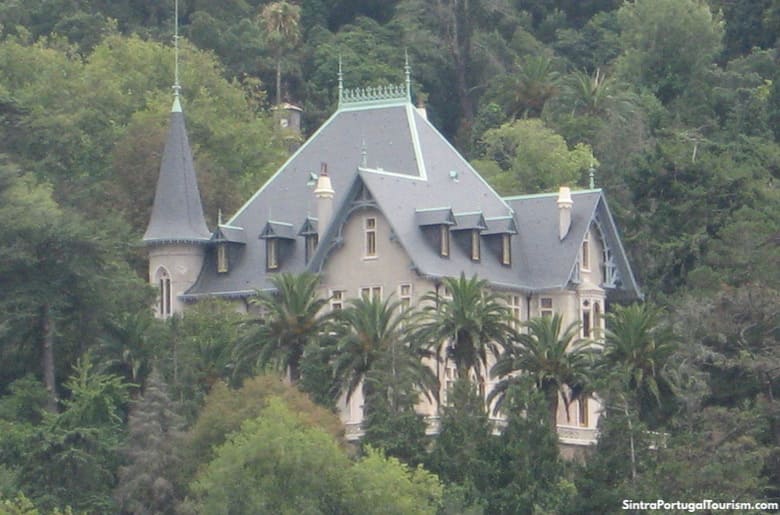
Biester Palace hidden in Pena Park
It's a notable example of romantic architecture, and a visit includes access to the surrounding park with exuberant and exotic vegetation brought from places as far as China and Japan. Visitors are given a map of the 6-acre park and there are signs in Portuguese and English. One of the natural attractions is a cave whose interior features ceramic tiles by Bordalo Pinheiro. Then there’s a viewpoint overlooking the Sintra National Palace.
Divided into two floors, the palace includes a dining room with views of Sintra, a billiard room, a library, and a chapel that mixes the neo-gothic and early art nouveau styles. Upstairs are the most private areas – the bedrooms, the dressing rooms and the bathrooms. Quite rare for a building of the time, and especially a private residence, is an elevator, made of wood and created by Raúl Mesnier de Ponsard, who designed Lisbon’s landmark Santa Justa Elevator.
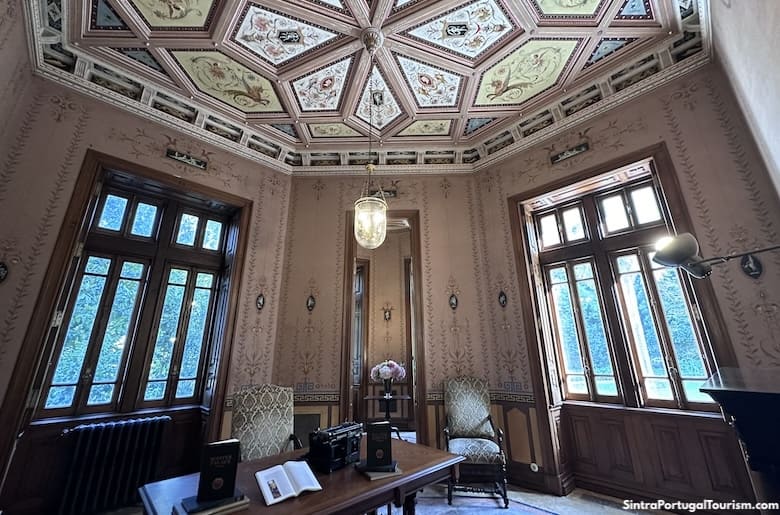
The Reading Room in Biester Palace
The library or reading room is the first room you see when you enter. It features a ceiling painted with mysterious pagan symbols.
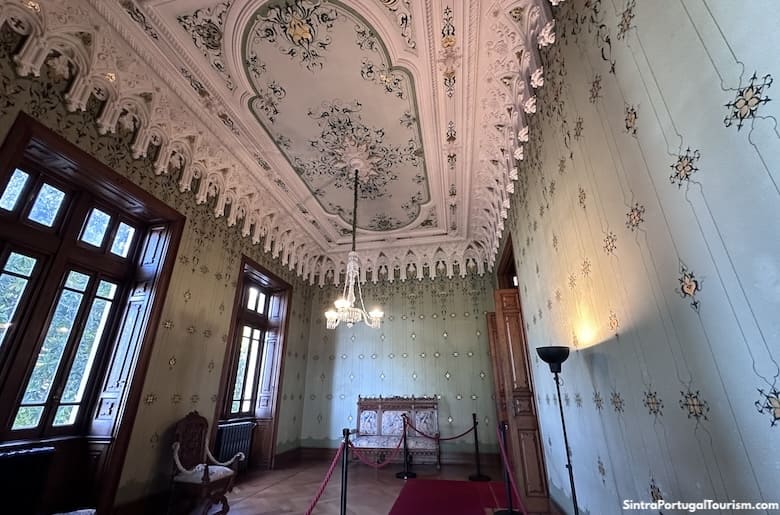
The Music Room in Biester Palace
The second room is the Music Room, which was used for entertainment purposes. You can still see the American organ from 1880 and the paintings by Manini.
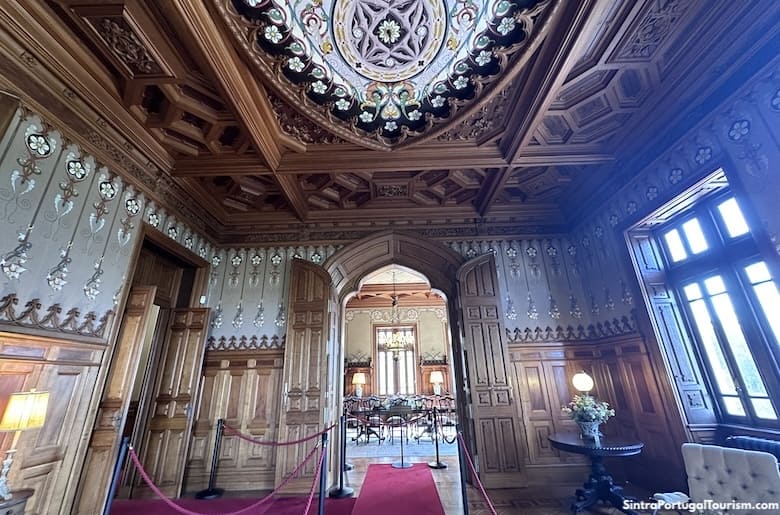
The Living Room in Biester Palace
The Living Room was where the Biester family welcomed its guests, with two neo-gothic doors opening to the terrace. Here too you can see the art of Luigi Manini, in the painted ceiling and walls.
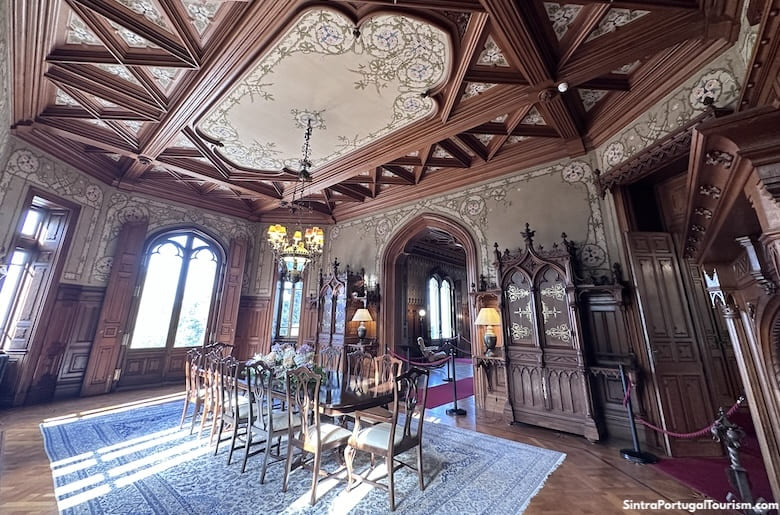
The Ballroom in Biester Palace
The ballroom was used for balls and celebrations. It’s equipped with a fireplace decorated with Bordallo Pinheiro tiles, and also has doors opening to the terrace.
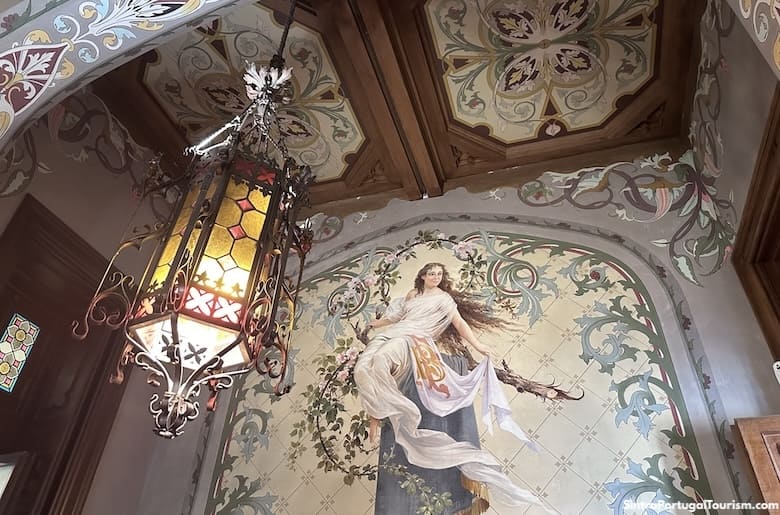
A beautifully-painted wall by the main staircase of Biester Palace
The wooden staircase that leads to the private upper floor is also of neo-gothic inspiration. On the walls are frescos by Manini, in the art nouveau style.
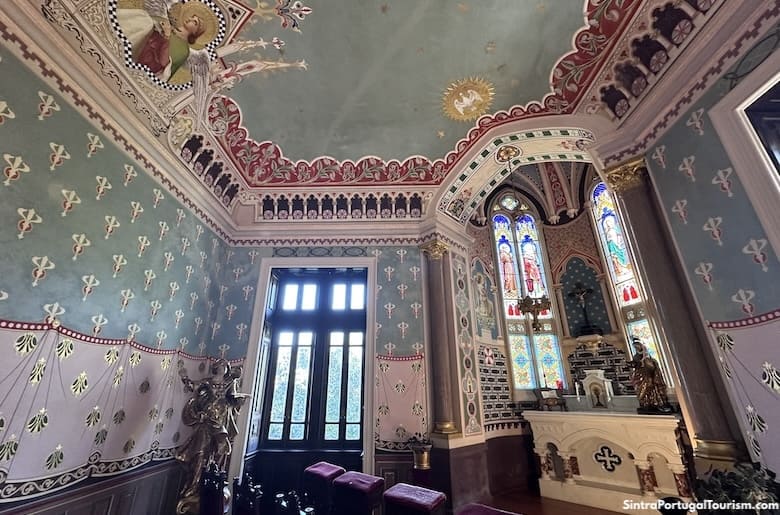
The chapel in Biester Palace
At the top of the stairs you find an elegant balcony with a view of the Moorish Castle. It leads to one of the entrances to the chapel – it has two, with one used by the residents and the other by visitors. It’s a neo-gothic Templar chapel, with symbolic paintings and impressive stained glass windows. The ceiling is the most beautiful in the palace, and is the work of Paul Baudry.
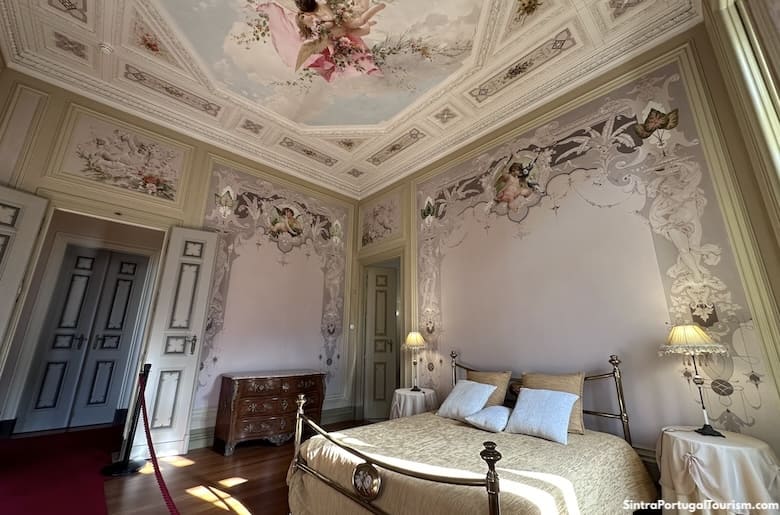
The master bedroom in Biester Palace
After the bathrooms and the smaller bedrooms, you reach the master bedroom, which was where Mr. and Mrs. Biester slept. It includes an en-suite bathroom (quite unusual at the time), and offers a magnificent view from the windows. The painted ceiling is also by Paul Baudry, with an angel having the so-called “Mona Lisa effect,” meaning the eyes seem to follow you as you walk around the room.
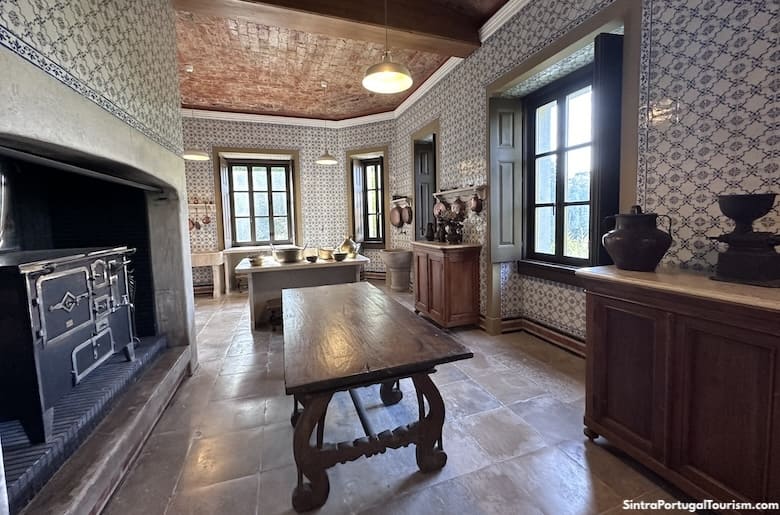
The kitchen in Biester Palace
Back downstairs, the visit ends in tiled rooms where temporary exhibitions are shown, and at the kitchen. That’s followed by a small room projecting scenes from “The Ninth Gate” that were filmed at the palace. It also displays a book and postcards featured in the movie.
How to Get to Biester Palace
Biester Palace is about a 15-minute walk up the hill from the Volta do Duche road (by the Sintra National Palace and the News Museum). Bus 434 that goes up to Pena Palace passes right by the door, but doesn’t stop, so walking is the only way to reach it.
Avenida Almeida Garrett, 1A
www.biester.pt
Admission and Tickets to Biester Palace
Tickets are €11 for visitors between the ages of 18 and 65. Children between 6 and 17 years of age, as well as seniors between 66 and 79 pay €6. Those under 5 and over 80 years of age are free. There’s also a family ticket for €28, allowing admission to two adults and up to three children. There are no discounts with the Lisboa Card.
Save time by getting your ticket online: Tickets for Biester Palace and Park
Opens every day, from 10am to 8pm from April to September (last admission at 7pm) and from 10am to 6:30pm from October to March (last admission at 5:30pm)